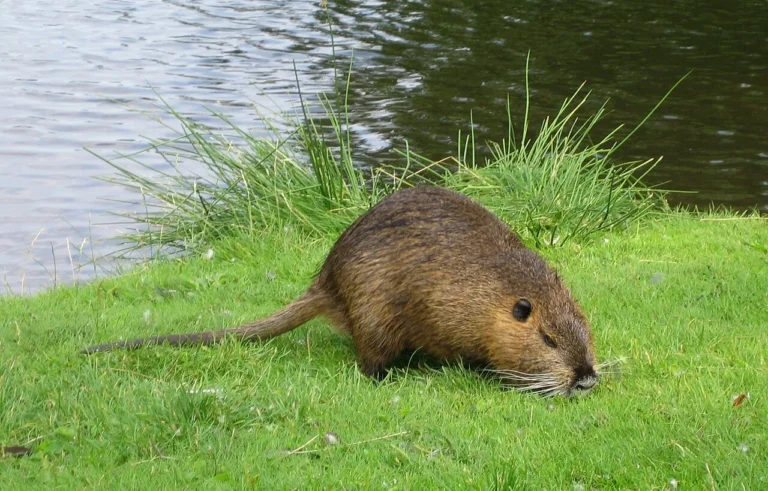American Alligator Vs American Crocodile Size, Weight, Overall Comparison
In an envisioned confrontation between the American alligator and the American crocodile, two reptiles with shared reptilian relations and physiological/behavioral similarities, we delve into the potential dynamics of this scenario. Both belonging to the Crocodylia order, these species share certain characteristics, yet they can be differentiated by distinctive features such as snout shapes. This analysis aims to highlight their shared ancestry while asserting that, in a fight, the American crocodile would likely emerge victorious against the American alligator due to its larger size, greater weight, increased strength, and heightened aggressiveness, making it the more formidable and dangerous contender.
American Alligator vs American Crocodile: Assessing the Likely Victor in a Confrontation
In a scenario involving the American alligator and the American crocodile, both reptiles with shared ancestry and physiological/behavioral similarities, the outcome of a fight is influenced by their differences in size, weight, strength, and aggression. While both are formidable predators, the advantages in favor of the American crocodile make it the likely victor in this hypothetical confrontation.
I). Reptilian Relations and Physiological/Behavioral Similarities:
– The American alligator and the American crocodile share reptilian relations and belong to the Crocodylia order. Physiologically and behaviorally, they exhibit certain similarities, making them formidable predators within their respective habitats. One key distinguishing feature is their snout shapes.
II). Snout Shape Differentiation:
– Differentiating between the two, the American alligator typically has a broad and U-shaped snout, while the American crocodile’s snout is more slender and V-shaped. This distinction in snout shapes can be a crucial factor in understanding their predatory strategies.
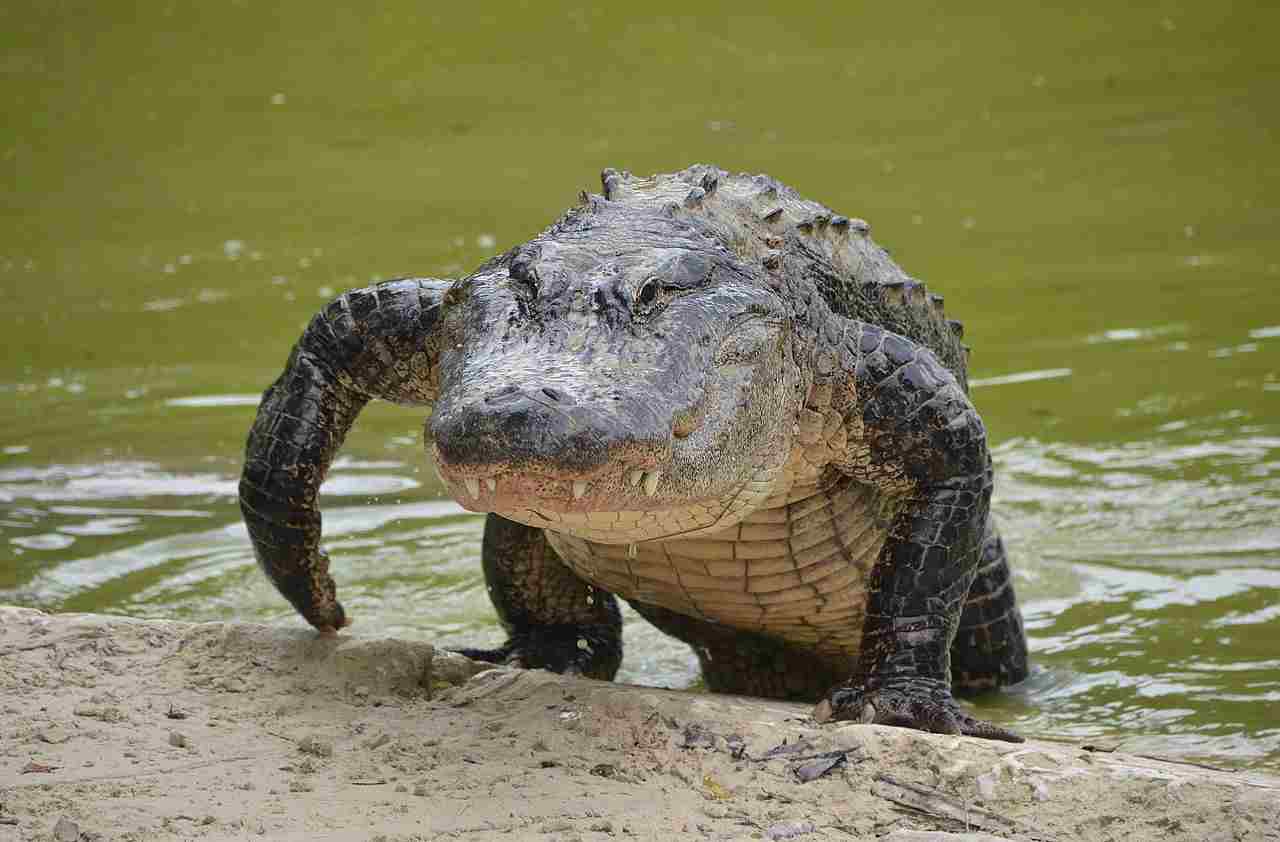
III). American Crocodile’s Size, Weight, and Strength Advantages:
– The American crocodile is generally larger, heavier, and stronger than the American alligator. These physical advantages contribute to the American crocodile’s prowess as a predator, providing it with a distinct edge in confrontations.
IV). Aggressiveness and Danger:
– American crocodiles are known for their heightened aggressiveness compared to American alligators. This increased aggression makes the American crocodile a more dangerous contender in a fight, as it may actively pursue and overpower its prey or adversaries.
V). Overall Dynamics:
– In this hypothetical scenario, the American crocodile would likely win in a fight against the American alligator due to its larger size, greater weight, increased strength, and heightened aggressiveness. These factors collectively make the American crocodile the more formidable and dangerous predator in this envisioned confrontation within the Crocodylia order.
*Details of Comparison
| Criteria | American Alligator |
American Crocodile
|
| Appearance | Broad, U-shaped snout, dark color |
Narrow, V-shaped snout, lighter color
|
| Size | Generally smaller, males 9-15 ft |
Larger, males 13-16 ft
|
| Weight | Males 500-1,000 lbs |
Similar range, slightly broader
|
| Bite Force (PSI) | Around 2,125 PSI |
Stronger bite, approx. 2,500 PSI
|
| Physical Offensive Adv. | Strong bite, ambush predator |
More agile in water, quick movements
|
| Physical Defensive Adv. | Stout build, escape into water |
Agile on land and water, tough hide
|
| Speed | Up to 20 mph |
Faster in water, 20-25 mph
|
| Agility | Agile in water, slower on land |
Highly agile in both environments
|
| Overall Physical Cap. | Robust, ambush predator |
Streamlined, versatile
|
| Habitat Preference(s) | Freshwater habitats |
Brackish or saltwater environments
|
| Tracks | Recognizable tracks, variations |
Both leave tracks, variations
|
| Lifespan | 30-50 years |
Longer lifespan, 60-70 years
|
| Mode of Feeding | Carnivore, narrow range |
Opportunistic, diverse diet
|
| Intelligence | Less intelligent |
More cognitively capable
|
| Social Behavior | More solitary |
Slightly more social
|
| Mode of Reproduction | Similar courtship and nesting |
Slight variations in behavior
|
| Parental Behavior | Similar protective behaviors |
Potential intensity differences
|
| Proximity to Human Areas | Adaptable to urban areas |
Prefers less disturbed habitats
|
| Behavior Toward Humans | Generally avoids conflict |
Generally avoids conflict
|
| Danger Posed to Humans | Can pose a threat, rare attacks |
Generally less dangerous, infrequent attacks
|
| Precautions | Similar, focus on education |
Similar, focus on education
|
| Conservation Status | Least Concern | Vulnerable |
| Conclusion – Similarities |
Both reptiles, similar reproduction and parental care, essential top predators
|
|
| Conclusion – Differences |
Size, habitat preferences, conservation status
|
Key Points
- Alligators are generally smaller, with a broad snout, dark coloration, and a less aggressive demeanor.
- Crocodiles are larger, with a narrow snout, lighter coloration, and a more agile and potentially dangerous nature.
- Alligators are more adaptable to human-inhabited areas compared to crocodiles.
- Crocodiles have a vulnerable conservation status, while alligators are listed as least concern.
- Both species play crucial roles as top predators in their ecosystems.
1. Taxonomy:
American Alligator (Alligator mississippiensis):
Order: Crocodylia
Family: Alligatoridae
Genus: Alligator
Species: mississippiensis
American Crocodile (Crocodylus acutus):
Order: Crocodylia
Family: Crocodylidae
Genus: Crocodylus
Species: acutus
2. Appearance:
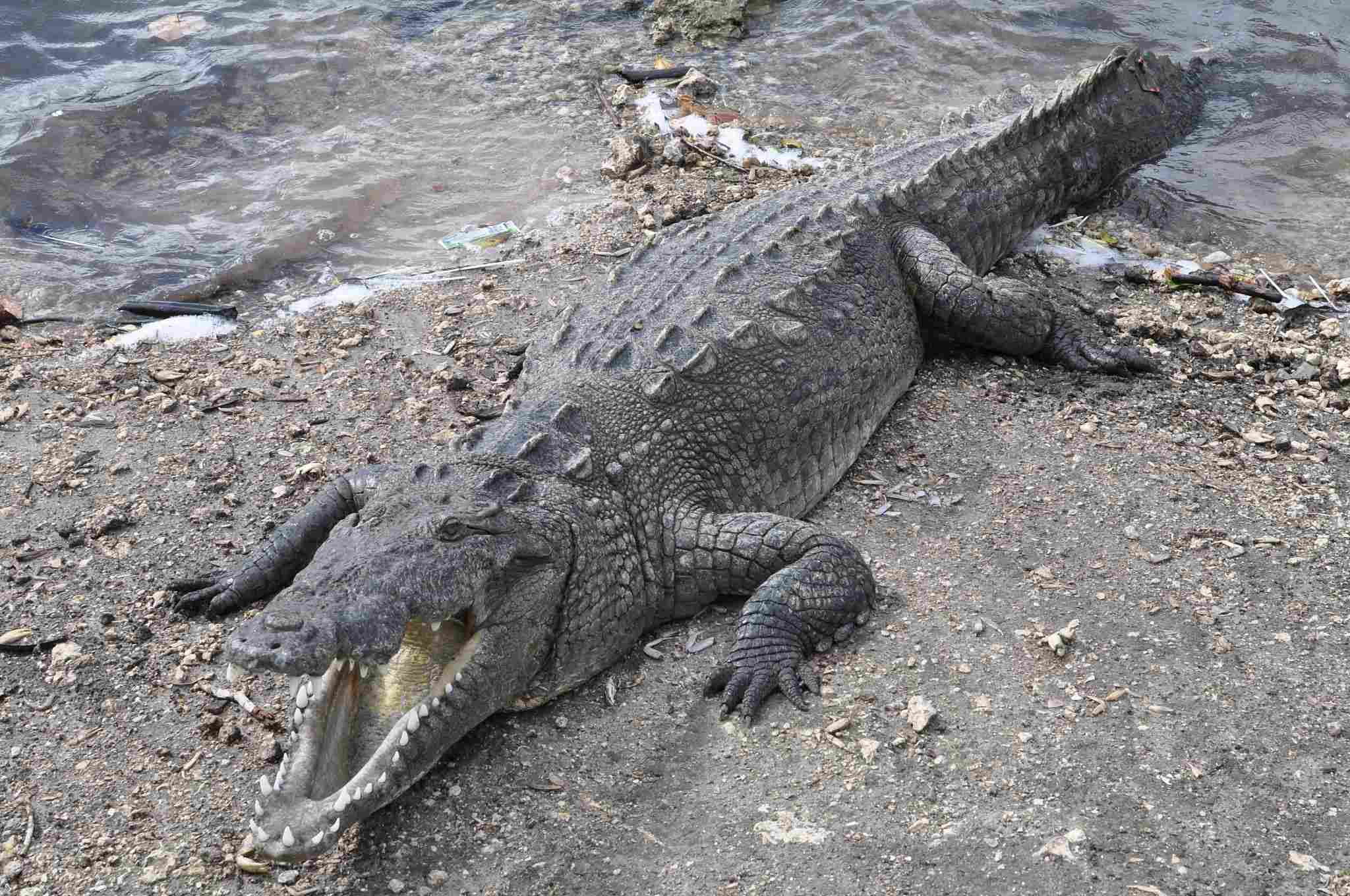
American Alligator:
Broad, U-shaped snout.
Dark, nearly black coloration.
Typically has a shorter and more robust appearance.
American Crocodile:
Narrow, V-shaped snout.
Lighter olive-brown coloration.
Slender and longer body compared to the alligator.
Comparison:
The alligator has a broader, darker appearance, while the crocodile is more slender with lighter coloration.
Ecological Implications:
Camouflage adaptation in alligators aids in swamp habitats, while the crocodile’s streamlined form suits a variety of environments.
3. Size:
American Alligator:
Adult males: 9-15 feet.
Adult females: Smaller, around 6-10 feet.
American Crocodile:
Typically larger, with males reaching 13-16 feet and females around 10 feet.
Comparison:
American crocodiles tend to be larger in size compared to alligators.
Ecological Implications:
Size differences may influence their roles in the ecosystem, affecting prey choices and interactions with other species.
4. Weight:
American Alligator:
Adult males: 500-1,000 pounds.
Adult females: Generally smaller, around 200-500 pounds.
American Crocodile:
Adult males: 500-1,200 pounds.
Adult females: Similar to alligators, but with a wider range.
Comparison:
Both species exhibit similar weight ranges, with crocodiles having a slightly broader span.
Ecological Implications:
Weight influences habitat choices and hunting strategies, impacting the distribution of these species within ecosystems.
5. Bite Force (PSI):
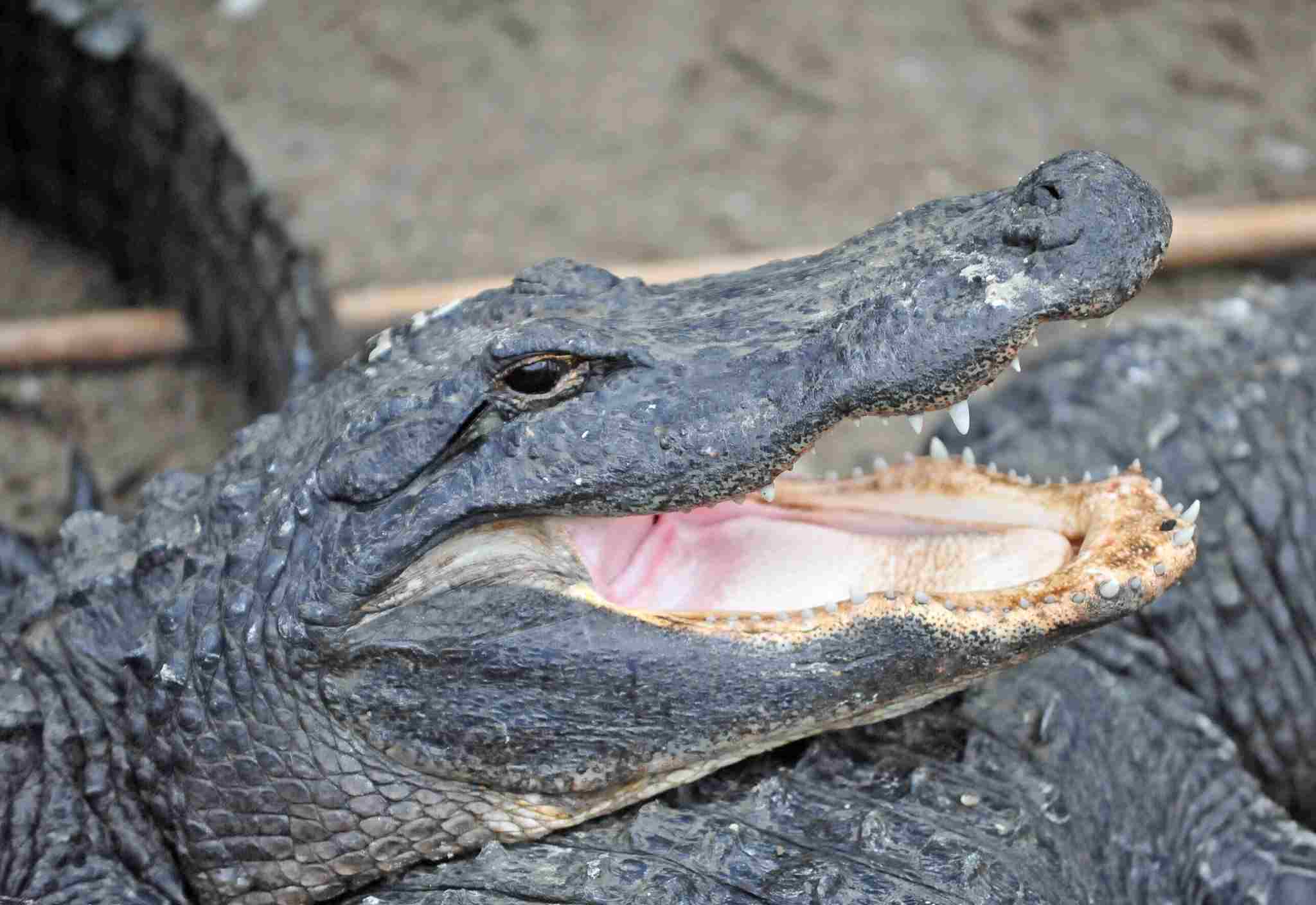
American Alligator:
Bite force estimated around 2,125 PSI.
American Crocodile:
Stronger bite force, approximately 2,500 PSI.
Comparison:
Crocodiles possess a stronger bite force than alligators.
Ecological Implications:
Bite force affects prey selection and the ability to access different food sources, influencing the species’ ecological roles.
6. Physical Offensive Advantages:
American Alligator:
Powerful jaws and a strong bite.
Ambush predator, utilizing stealth for effective strikes.
American Crocodile:
More agile in water.
Excellent swimmer, able to surprise prey with quick movements.
Comparison:
Alligators rely on strong bites and ambush tactics, while crocodiles excel in aquatic agility.
Ecological Implications:
Adaptations in offensive strategies contribute to niche differentiation, reducing direct competition between the two species.
7. Physical Defensive Advantages:
American Alligator:
Stout build provides protection against some predators.
Able to escape into water quickly.
American Crocodile:
Agile on land and water, offering versatile escape options.
Tougher, scaly hide provides some defense.
Comparison:
Both possess defensive adaptations, with crocodiles showcasing greater agility.
Ecological Implications:
Defensive strategies influence interactions with predators, shaping the overall ecosystem dynamics.
8. Speed (Km/hour or Mile/hour):
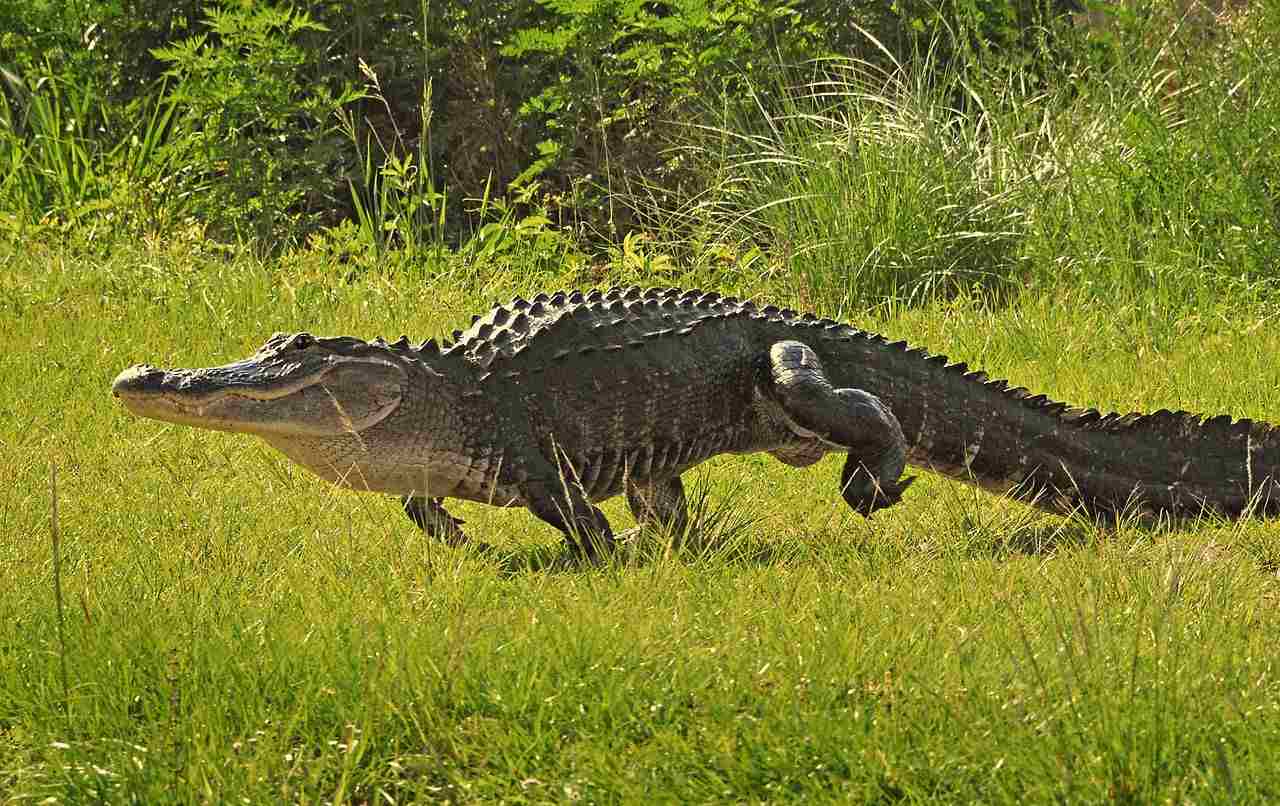
American Alligator:
Can reach speeds up to 20 mph (32 km/h) in short bursts.
American Crocodile:
Faster in water, reaching speeds around 20-25 mph (32-40 km/h).
Comparison:
Crocodiles exhibit slightly higher speeds in water compared to alligators.
Ecological Implications:
Speed influences hunting success and evasion tactics, impacting the species’ ecological roles in their respective habitats.
9. Agility:
American Alligator:
Agile in water but relatively slower on land.
Better adapted to ambush hunting.
American Crocodile:
Highly agile in both water and on land.
Can navigate various terrains effectively.
Comparison:
Crocodiles demonstrate superior agility both in water and on land.
Ecological Implications:
Agility affects the ability to exploit diverse habitats and adapt to changing environmental conditions.
10. Overall Physical Capacity:
American Alligator:
Robust build with a focus on powerful bites.
Suited for ambush hunting and dominance in certain environments.
American Crocodile:
More streamlined physique with enhanced agility.
Well-adapted for diverse habitats and versatile hunting strategies.
Comparison:
Alligators emphasize strength and ambush tactics, while crocodiles exhibit a more versatile and adaptive physical capacity.
Ecological Implications:
Differences in physical capacity contribute to the coexistence of these species within ecosystems, each occupying distinct ecological niches.
11. Habitat Preference(s):
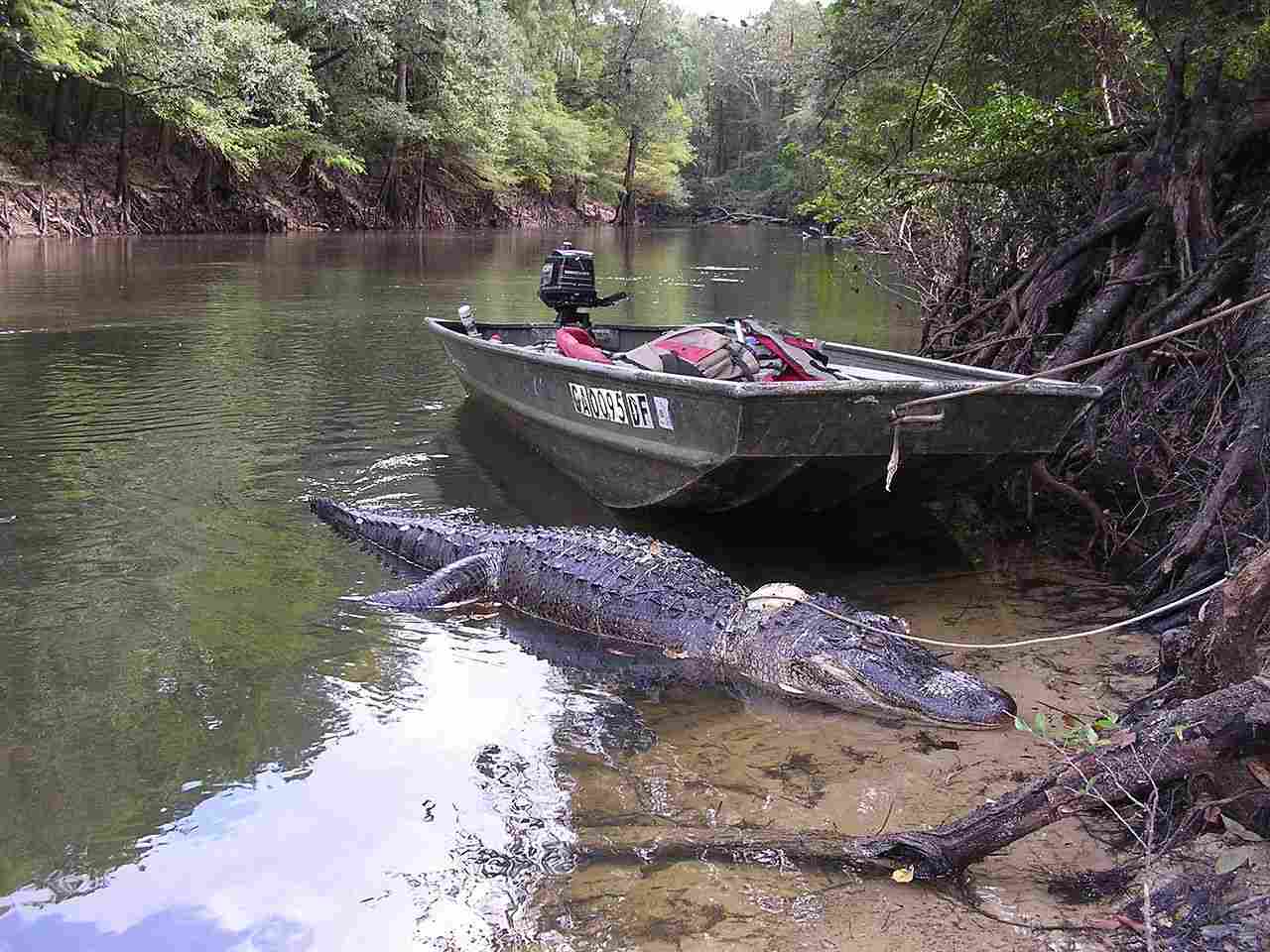
American Alligator:
Prefers freshwater habitats like swamps, lakes, and rivers.
Thrives in slow-moving or still waters.
American Crocodile:
Tends to inhabit brackish or saltwater environments.
Coastal areas, estuaries, and mangrove swamps are common habitats.
Comparison:
Alligators favor freshwater habitats, while crocodiles show a preference for brackish or saltwater ecosystems.
Ecological Implications:
Habitat preferences influence the distribution and interactions of these species within different ecosystems.
12. Tracks:
American Alligator:
Distinctive track patterns with claw marks visible.
Typically shows a belly drag in mud.
American Crocodile:
Similar track patterns but often less defined.
Tracks may extend into saltwater areas.
Comparison:
Both species leave recognizable tracks, with variations influenced by the substrate.
Ecological Implications:
Tracking patterns can aid researchers in studying the distribution and movement of these species in their respective habitats.
13. Lifespan:
American Alligator:
Can live up to 30-50 years in the wild.
American Crocodile:
Generally has a longer lifespan, reaching 60-70 years.
Comparison:
Crocodiles tend to have a longer lifespan compared to alligators.
Ecological Implications:
Lifespan influences population dynamics, reproductive strategies, and the overall ecological impact of each species within their habitats.
14. Mode of Feeding:
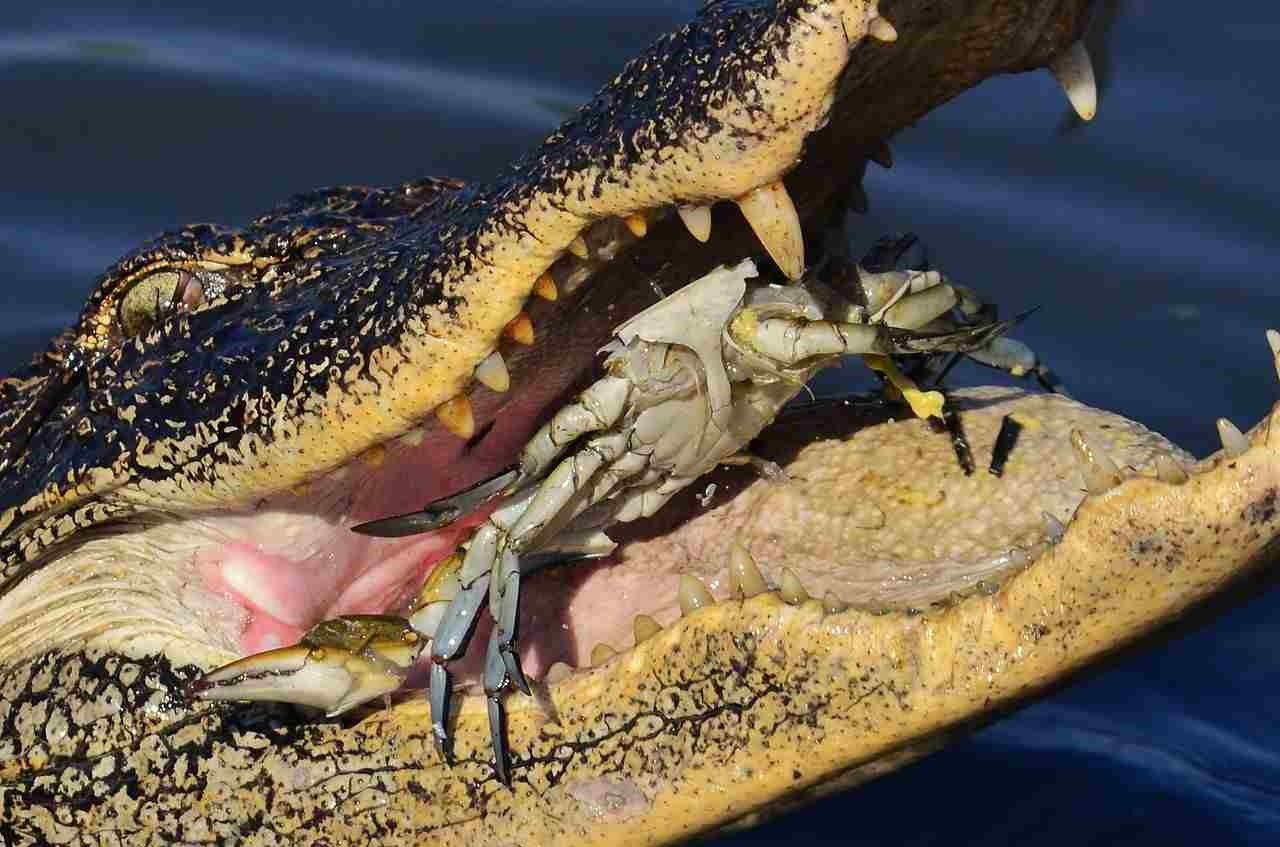
American Alligator:
Primarily a carnivore.
Feeds on fish, turtles, crustaceans, birds, and mammals, often ambushing prey.
American Crocodile:
Opportunistic feeder with a more varied diet.
Consumes fish, crustaceans, and larger vertebrates.
Comparison:
Alligators focus on a narrower range of prey compared to the more diverse diet of crocodiles.
Ecological Implications:
Differences in feeding behavior contribute to resource partitioning and reduce direct competition between the two species.
15. Intelligence:
American Alligator:
Considered less intelligent than crocodiles.
Displays basic problem-solving abilities.
American Crocodile:
Exhibits higher cognitive capabilities.
Shows more complex problem-solving skills.
Comparison:
Crocodiles are generally recognized as more intelligent than alligators.
Ecological Implications:
Intelligence influences adaptive behaviors, social interactions, and the ability to exploit diverse ecological niches.
16. Social Behavior:
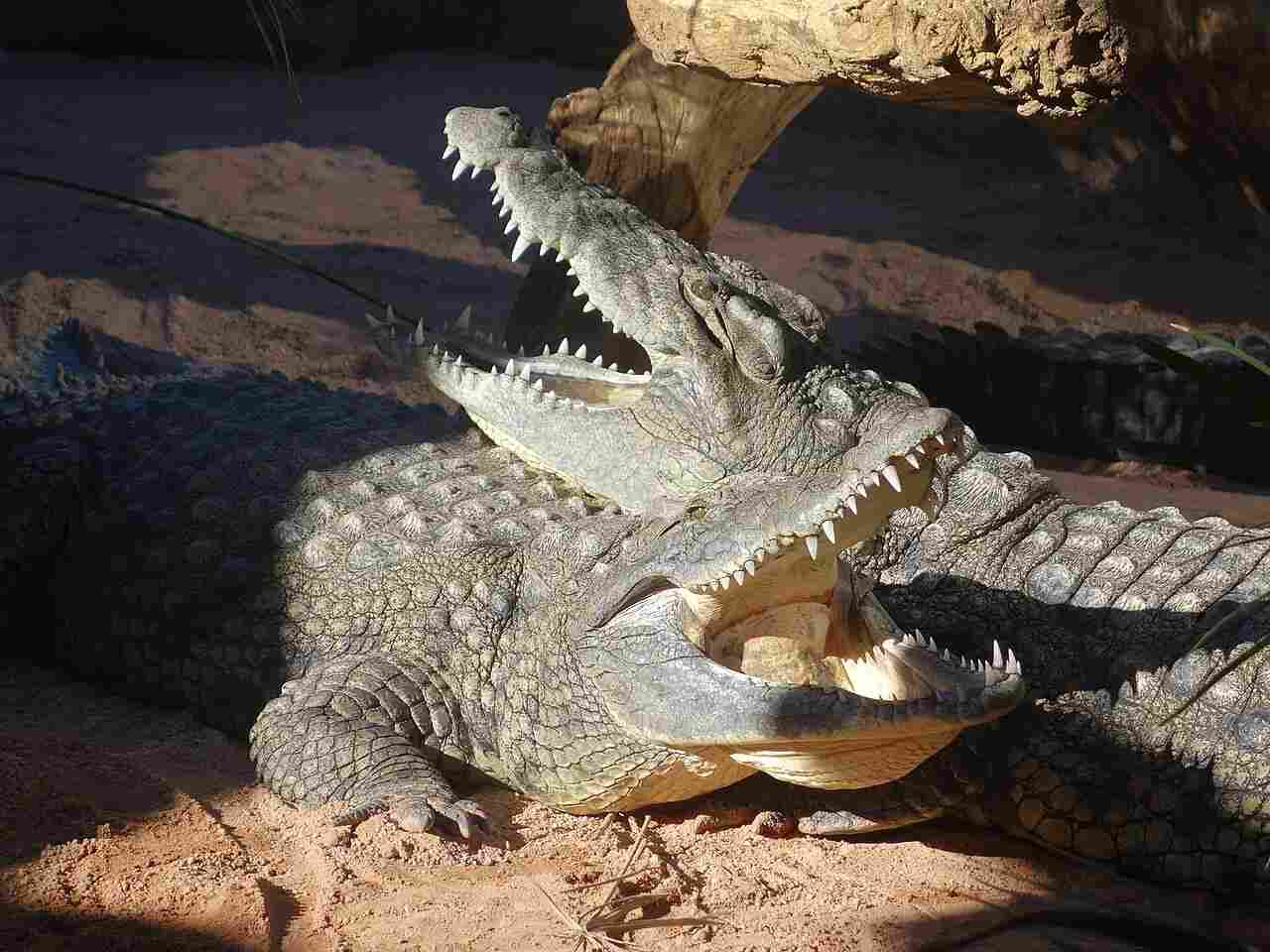
American Alligator:
Tends to be more solitary.
Aggressive territorial behavior during mating season.
American Crocodile:
Can display more social behavior, especially during the mating season.
Some cooperative interactions observed.
Comparison:
Crocodiles exhibit a slightly higher tendency for social behavior compared to alligators.
Ecological Implications:
Social dynamics impact population structures and resource utilization within their respective habitats.
17. Mode of Reproduction:
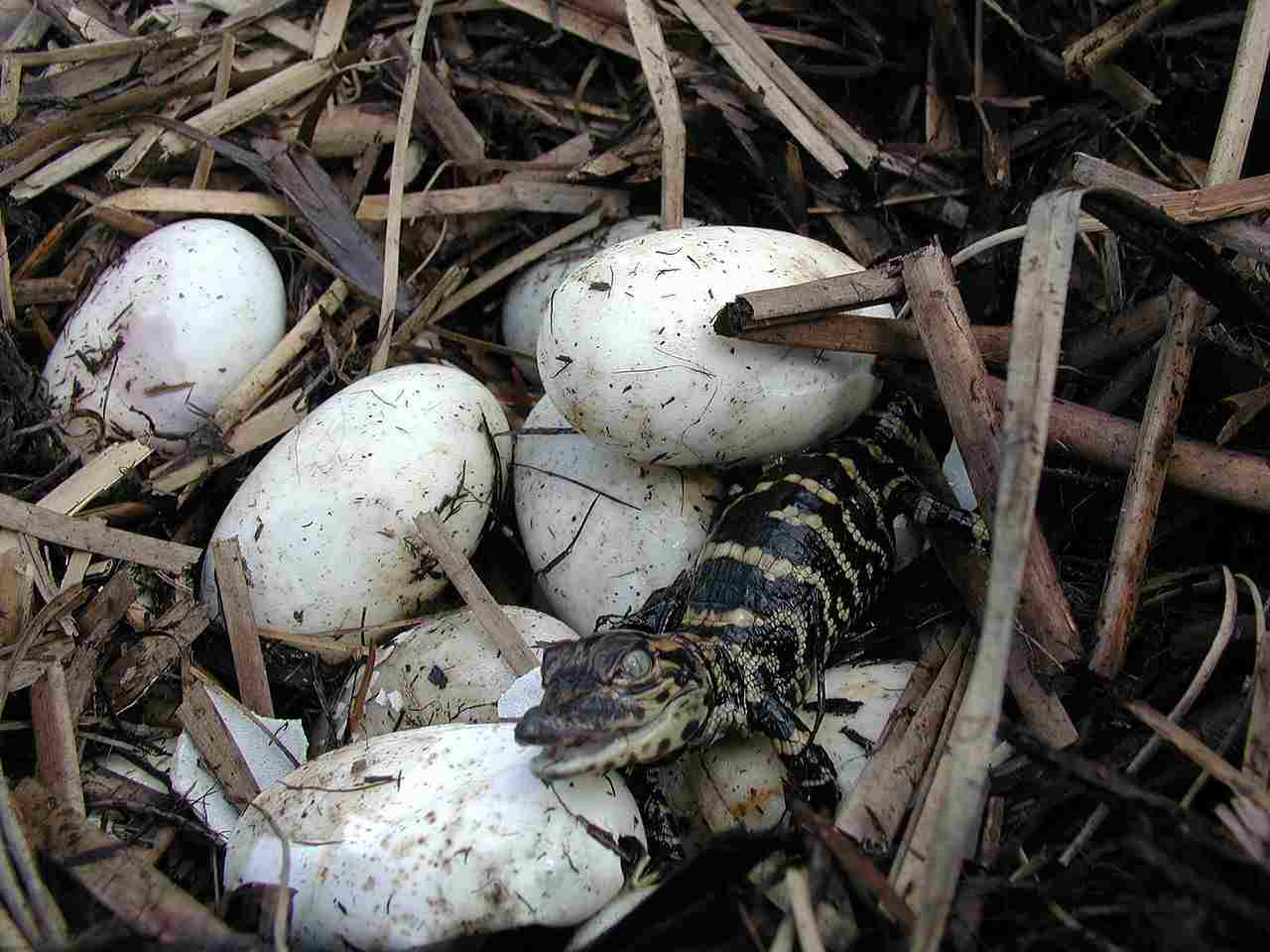
American Alligator:
Exhibits courtship displays.
Females build nests and guard eggs until hatching.
American Crocodile:
Elaborate courtship rituals.
Females lay eggs in nests, often in sandy areas.
Comparison:
Both species follow a similar pattern of courtship and nesting, with variations in the details of their reproductive behavior.
Ecological Implications:
Reproductive strategies influence population dynamics and the sustainability of each species within their respective ecosystems.
18. Parental Behavior:
American Alligator:
Female guards the nest.
Shows protective behavior towards hatchlings.
American Crocodile:
Females also guard nests.
May exhibit more proactive protection of hatchlings.
Comparison:
Similarities in parental behavior, with potential differences in the intensity of protection.
Ecological Implications:
Parental care contributes to the survival of offspring, impacting population dynamics and the overall health of each species within their ecosystems.
19. Proximity to Human-Inhabited Areas:
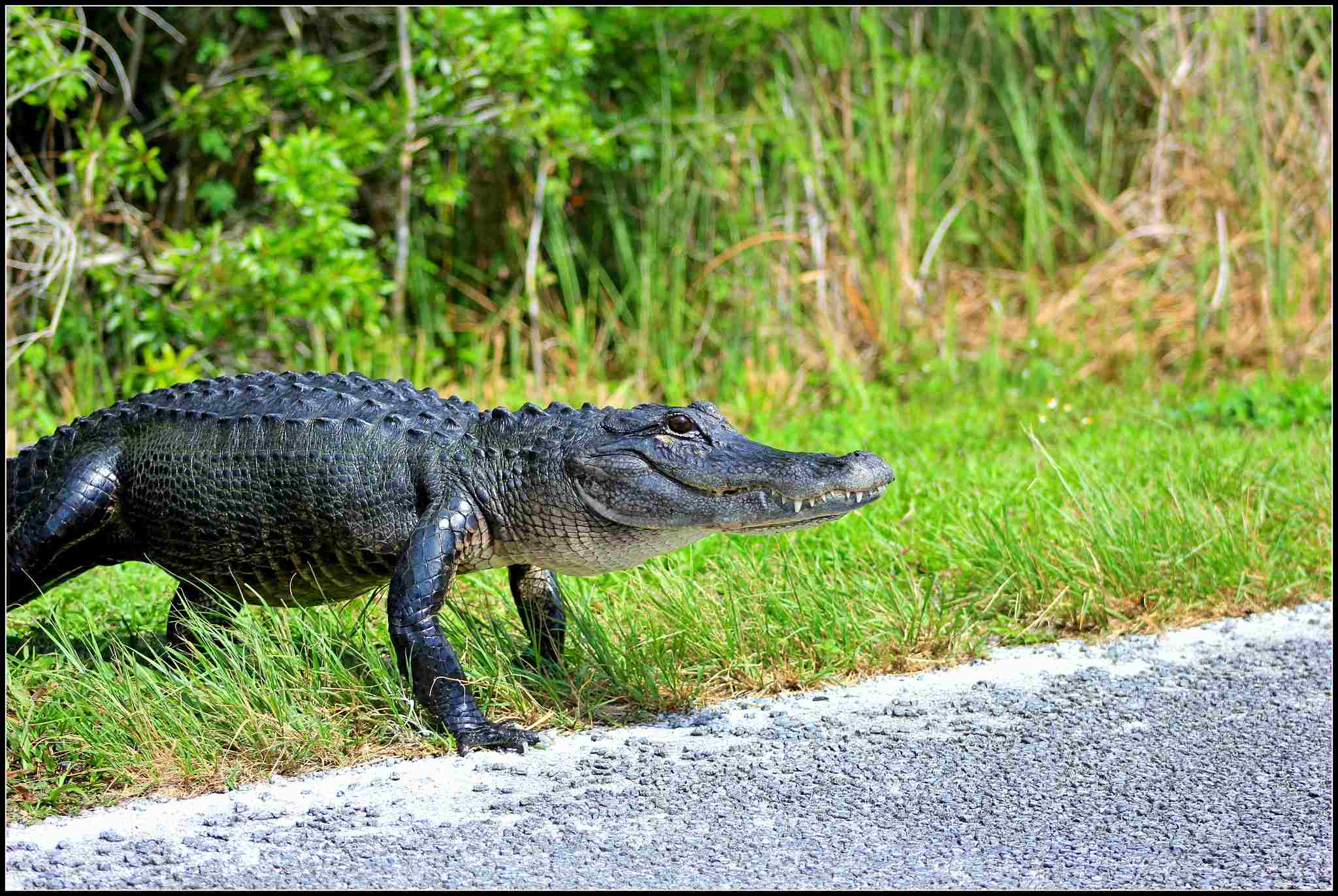
American Alligator:
More adaptable to living near human settlements.
Can be found in urban areas, golf courses, and residential ponds.
American Crocodile:
Tends to prefer less disturbed habitats.
Encounters with humans are less frequent.
Comparison:
Alligators show a higher tolerance for human proximity compared to crocodiles.
Ecological Implications:
Human-wildlife conflicts may vary, with alligators more likely to interact with human activities in urbanized environments.
20. Behavior Toward Humans:
American Alligator:
Generally avoids direct confrontation with humans.
Can display aggression if provoked or cornered.
American Crocodile:
Usually more cautious around humans.
Less likely to show aggression without provocation.
Comparison:
Both species tend to avoid conflict with humans, but alligators may be more prone to aggression in certain situations.
Ecological Implications:
Human interactions impact the behavior and distribution of these species, influencing their roles in the ecosystem.
21. Danger Posed to Humans:
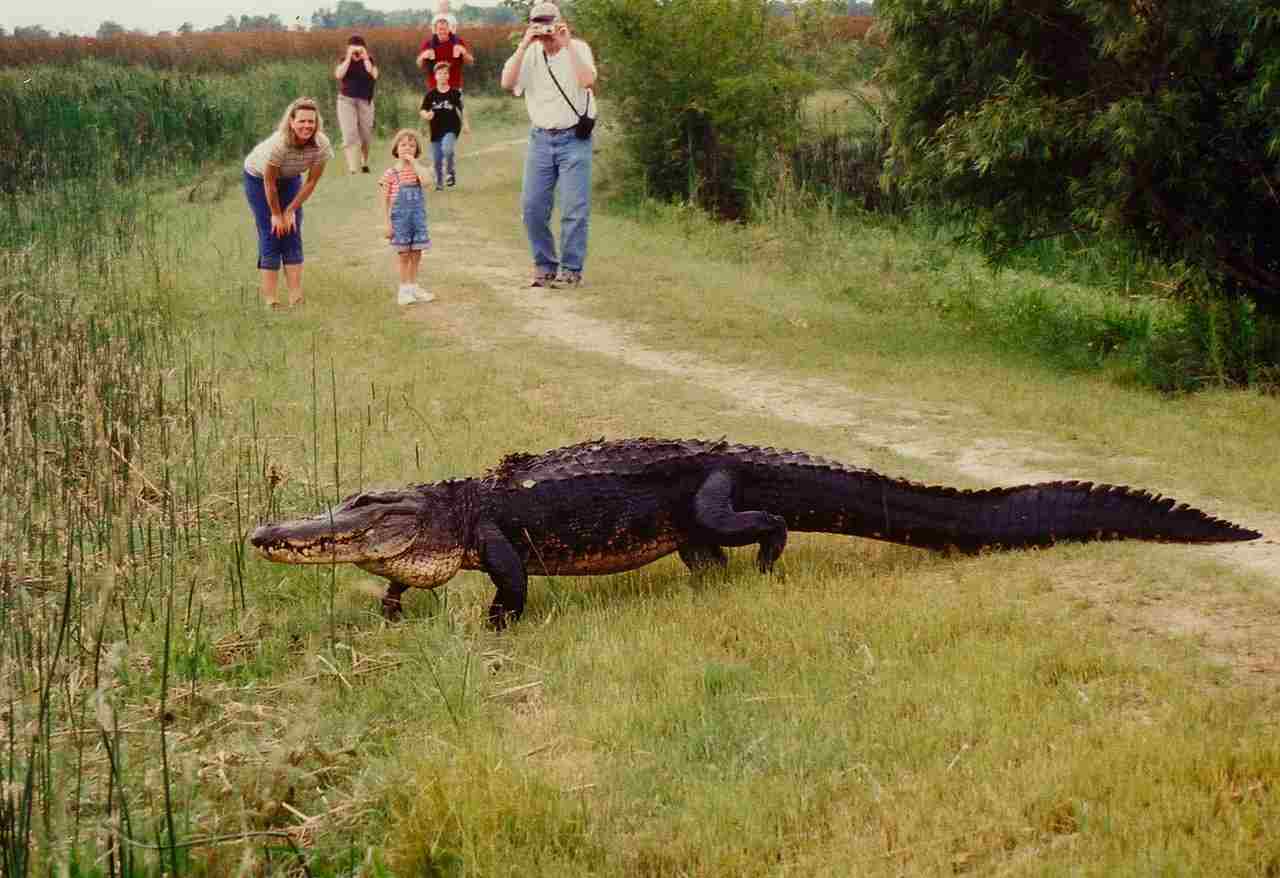
American Alligator:
Can pose a threat, especially when provoked or if humans venture too close.
Rare instances of attacks on humans.
American Crocodile:
Generally considered less dangerous to humans.
Infrequent reports of attacks.
Comparison:
Alligators are perceived as having a higher potential danger to humans than crocodiles.
Ecological Implications:
Human safety considerations and perceptions can affect conservation efforts and management strategies for these species.
22. Associated Precautions:
American Alligator:
Warning signs and education about avoiding feeding them.
Encouraging responsible behavior in their presence.
American Crocodile:
Emphasizing caution near known crocodile habitats.
Educating on responsible behavior to minimize potential conflicts.
Comparison:
Similar precautions for both species, with a focus on educating the public and promoting coexistence.
Ecological Implications:
Public awareness and responsible behavior play a crucial role in minimizing negative interactions and ensuring the conservation of these species.
23. Conservation Status:
American Alligator:
Least Concern (IUCN).
Conservation success story; population rebounded after protection measures.
American Crocodile:
Listed as Vulnerable (IUCN).
Faces habitat loss and potential threats from human activities.
Comparison:
Alligators have a more favorable conservation status compared to the vulnerable status of American crocodiles.
Ecological Implications:
Conservation efforts are essential for maintaining healthy populations and preserving the ecological roles of both species in their respective habitats.
Summary of Comparison
Appearance:
Alligator: Broad, U-shaped snout, dark coloration.
Crocodile: Narrow, V-shaped snout, lighter olive-brown coloration.
Size:
Alligator: Generally smaller, males 9-15 feet.
Crocodile: Larger, males 13-16 feet.
Weight:
Alligator: Males 500-1,000 pounds.
Crocodile: Similar range, slightly broader.
Bite Force (PSI):
Alligator: Around 2,125 PSI.
Crocodile: Stronger bite, approximately 2,500 PSI.
Physical Offensive Advantages:
Alligator: Strong bite, ambush predator.
Crocodile: More agile in water, quick movements.
Physical Defensive Advantages:
Alligator: Stout build, escape into water.
Crocodile: Agile on land and water, tough hide.
Speed:
Alligator: Up to 20 mph.
Crocodile: Faster in water, 20-25 mph.
Agility:
Alligator: Agile in water, slower on land.
Crocodile: Highly agile in both environments.
Overall Physical Capacity:
Alligator: Robust, ambush predator.
Crocodile: Streamlined, versatile.
Habitat Preference(s):
Alligator: Freshwater habitats.
Crocodile: Brackish or saltwater environments.
Tracks:
Both leave recognizable tracks, variations based on substrate.
Lifespan:
Alligator: 30-50 years.
Crocodile: Longer lifespan, 60-70 years.
Mode of Feeding:
Alligator: Carnivore, narrow range.
Crocodile: Opportunistic, diverse diet.
Intelligence:
Alligator: Less intelligent.
Crocodile: More cognitively capable.
Social Behavior:
Alligator: More solitary.
Crocodile: Slightly more social.
Mode of Reproduction:
Similar courtship and nesting, slight variations.
Parental Behavior:
Similar protective behaviors, potential intensity differences.
Proximity to Human-Inhabited Areas:
Alligator: Adaptable to urban areas.
Crocodile: Prefers less disturbed habitats.
Behavior Toward Humans:
Both generally avoid conflict, alligators may be more aggressive.
Danger Posed to Humans:
Alligator: Can pose a threat, rare attacks.
Crocodile: Generally less dangerous, infrequent attacks.
Associated Precautions:
Similar precautions, focus on education and responsible behavior.
Conservation Status:
Alligator: Least Concern.
Crocodile: Vulnerable.
Conclusion:
I). Similarities:
Both are reptiles belonging to the order Crocodylia.
Share similar modes of reproduction and parental care behaviors.
Play essential roles in their ecosystems as top predators, contributing to biodiversity.
II). Differences:
Size, with crocodiles generally being larger.
Habitat preferences, with alligators favoring freshwater and crocodiles often found in brackish or saltwater.
Conservation status, with crocodiles facing more significant threats and having a vulnerable status compared to the more secure status of alligators.
